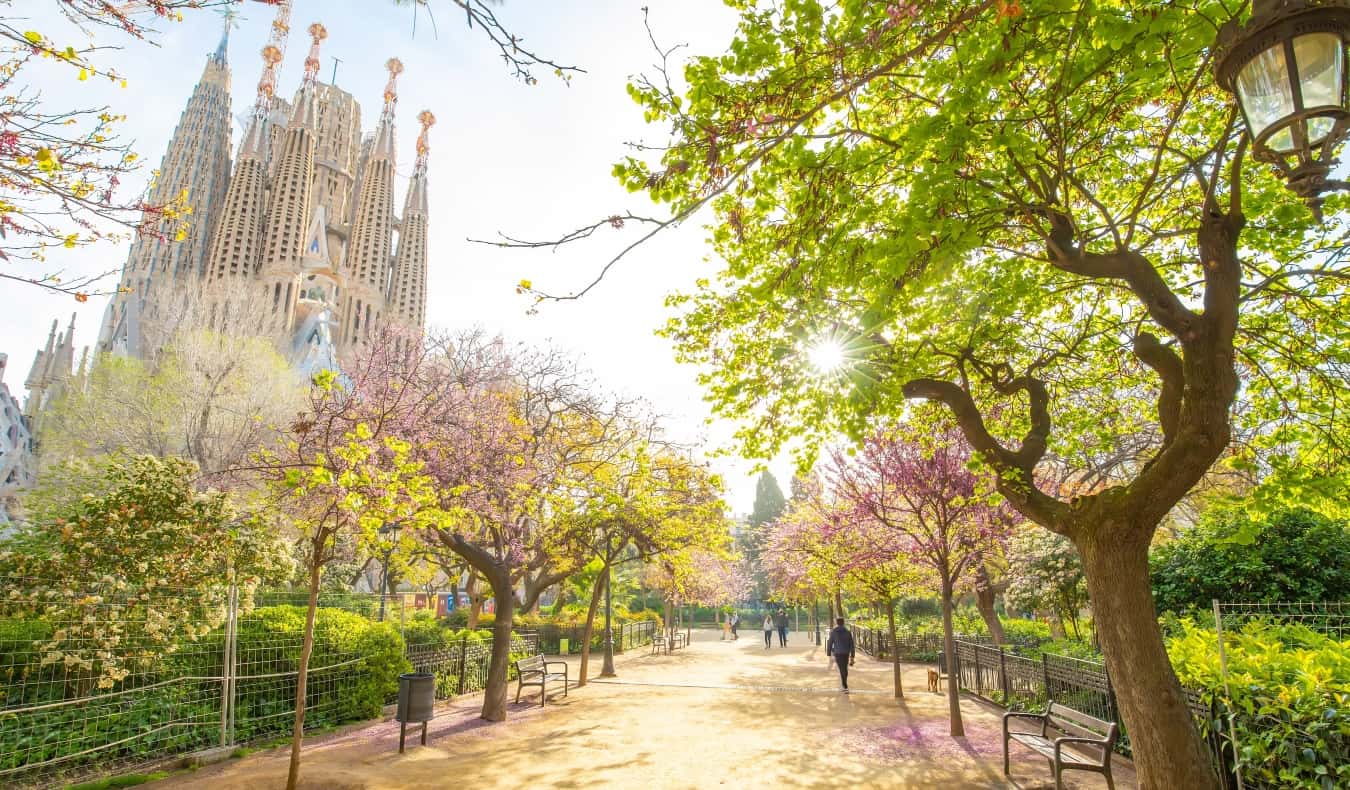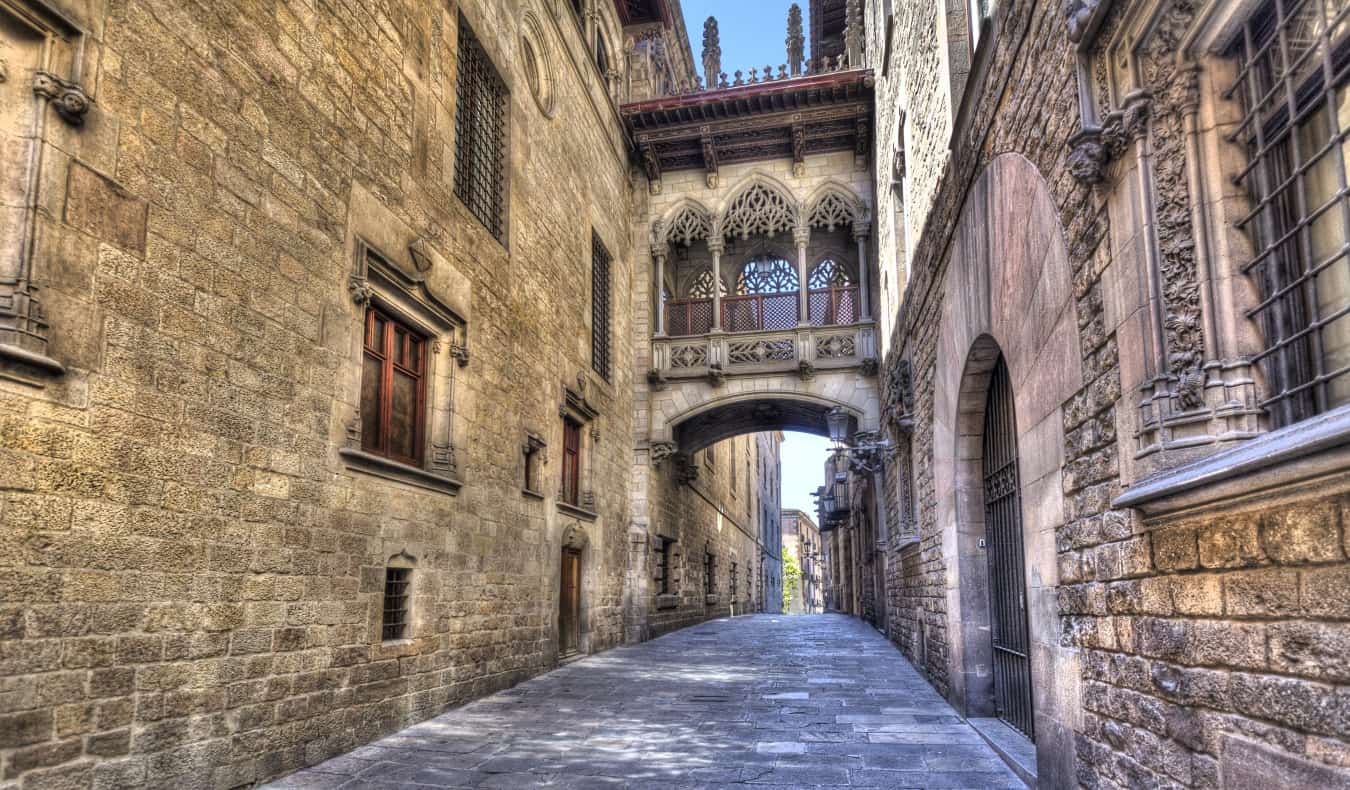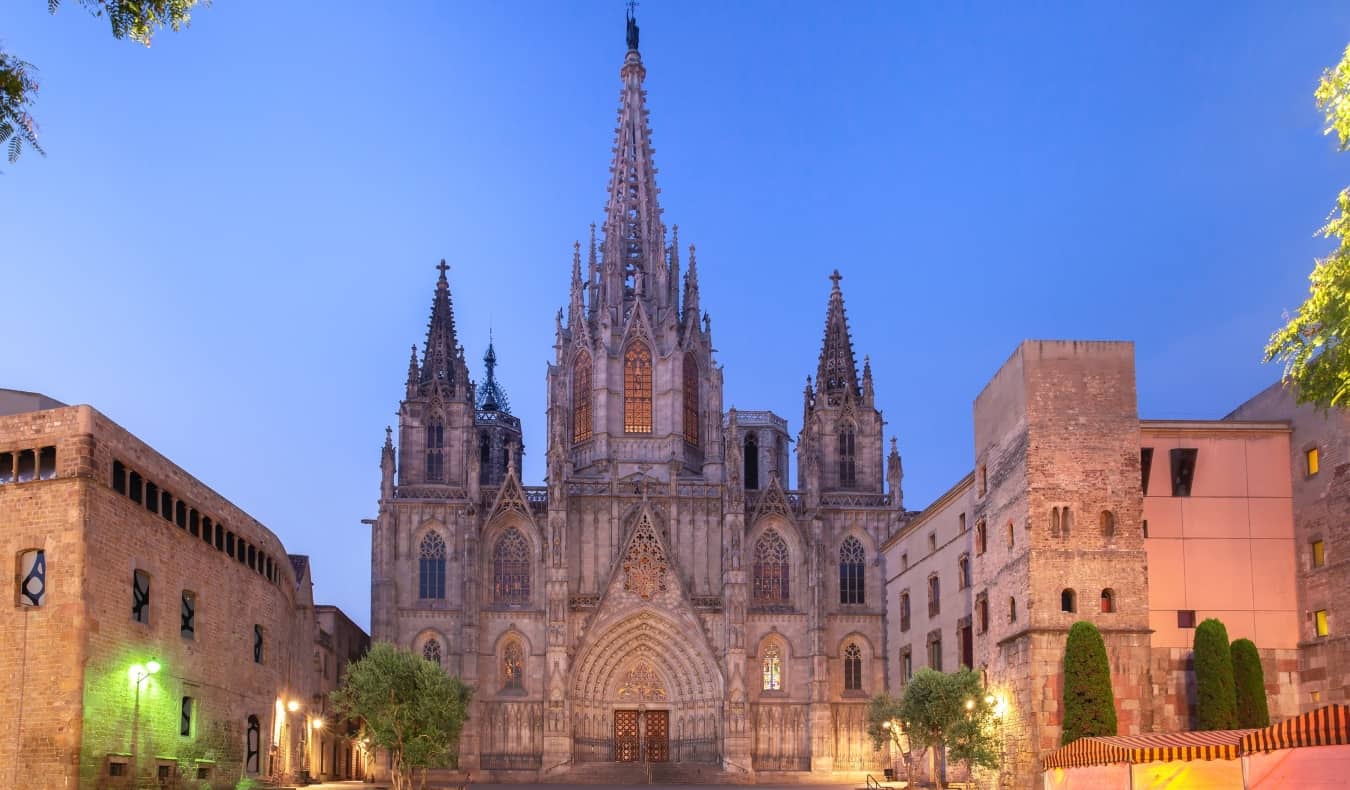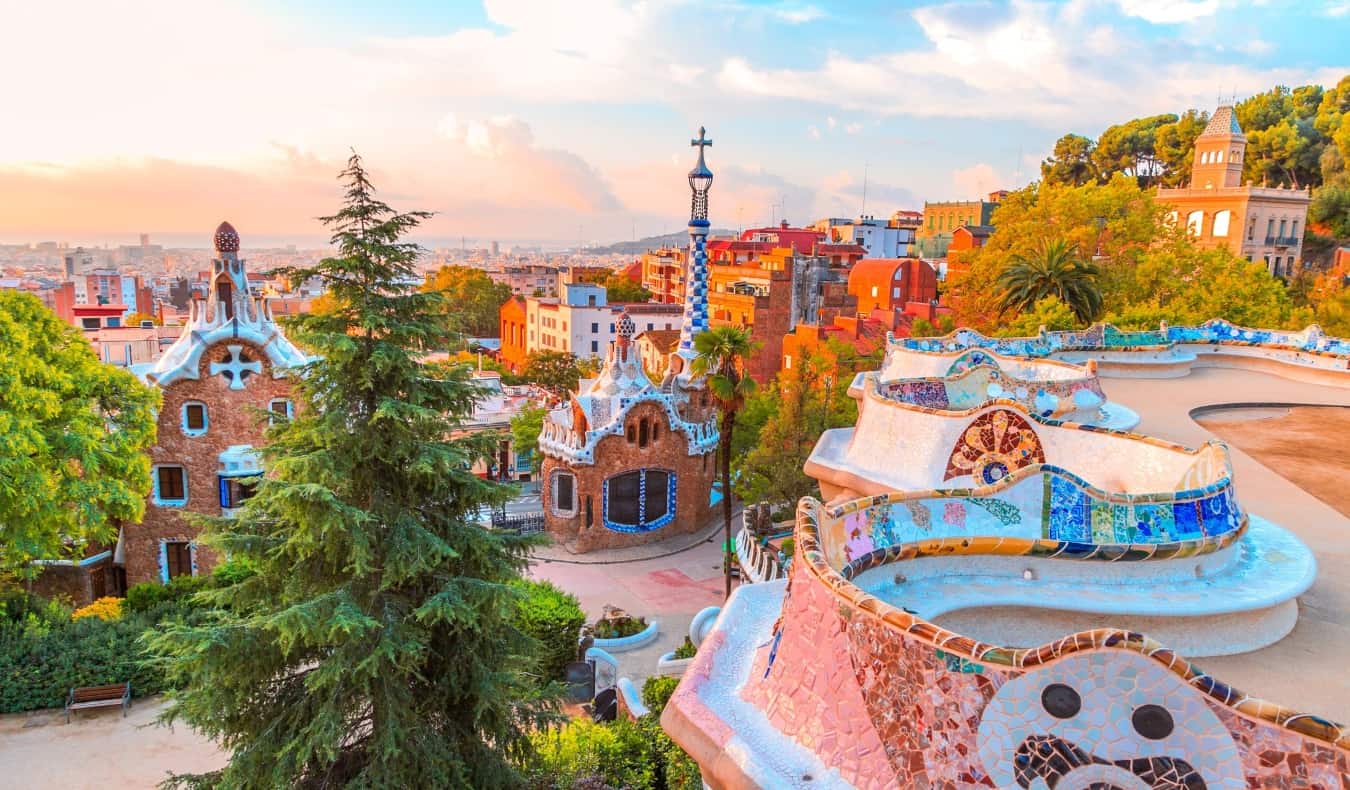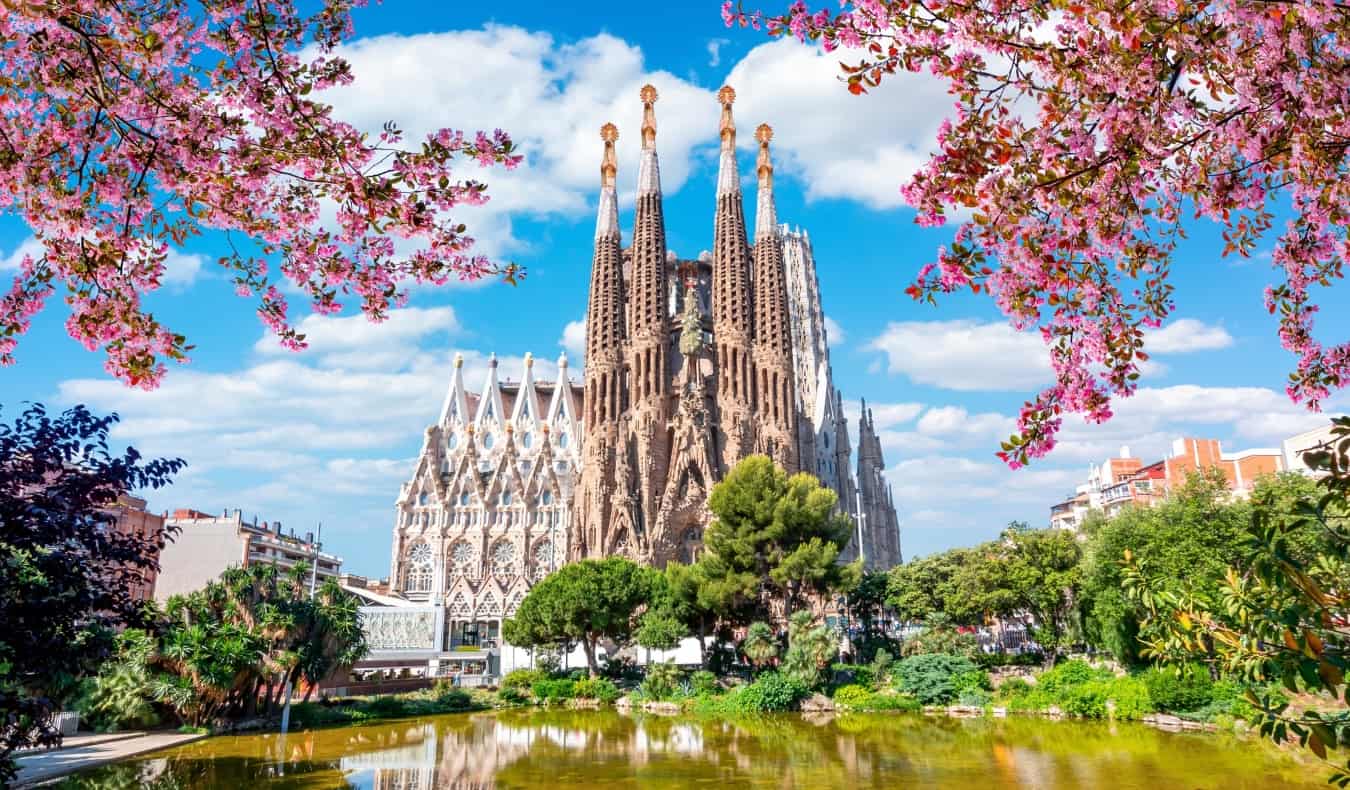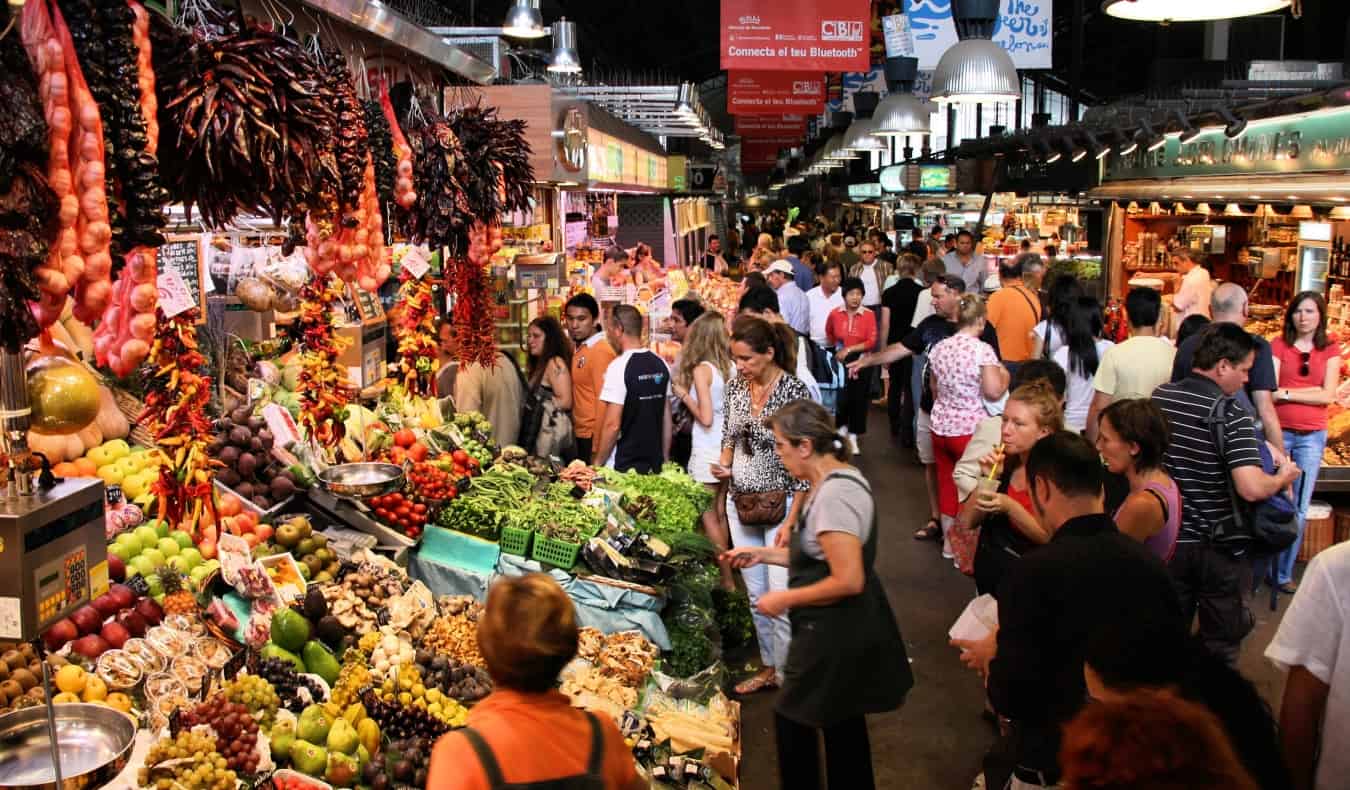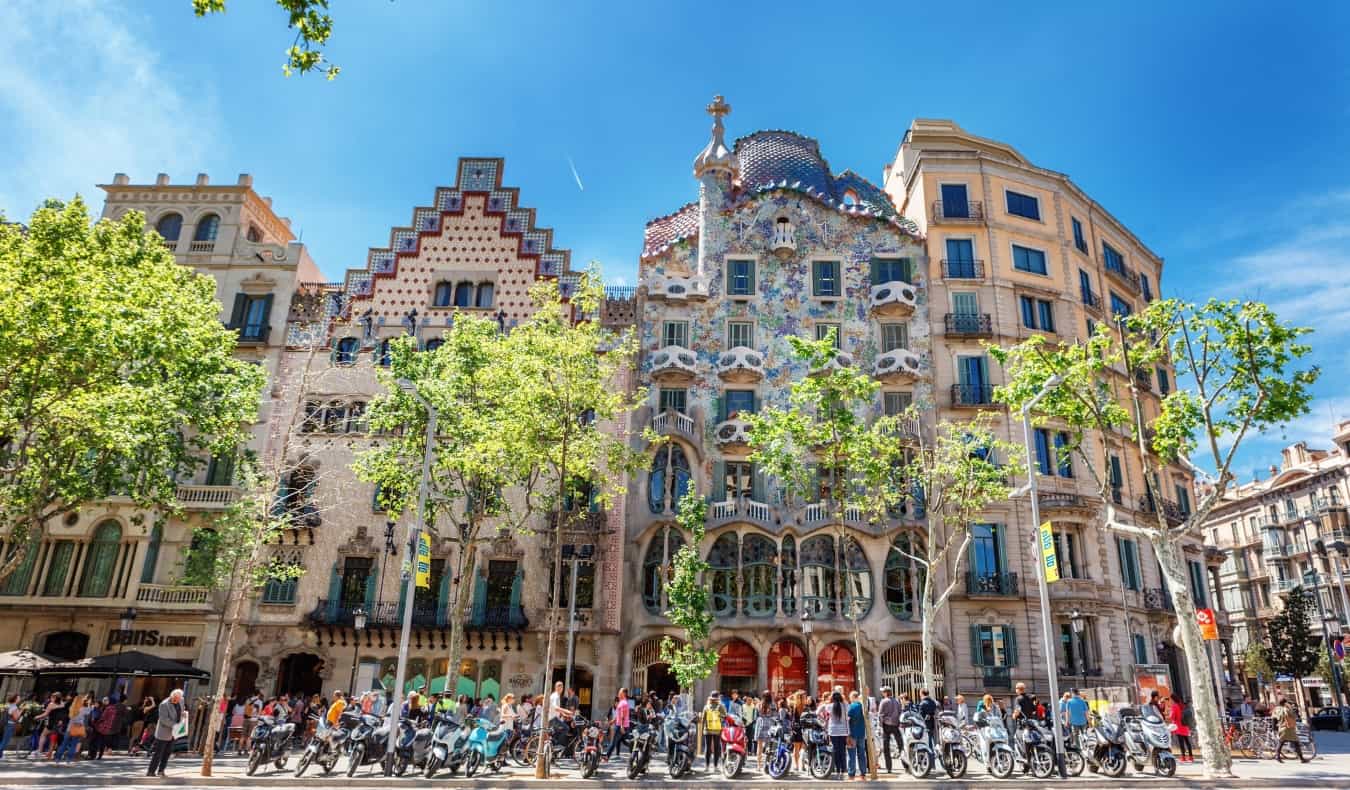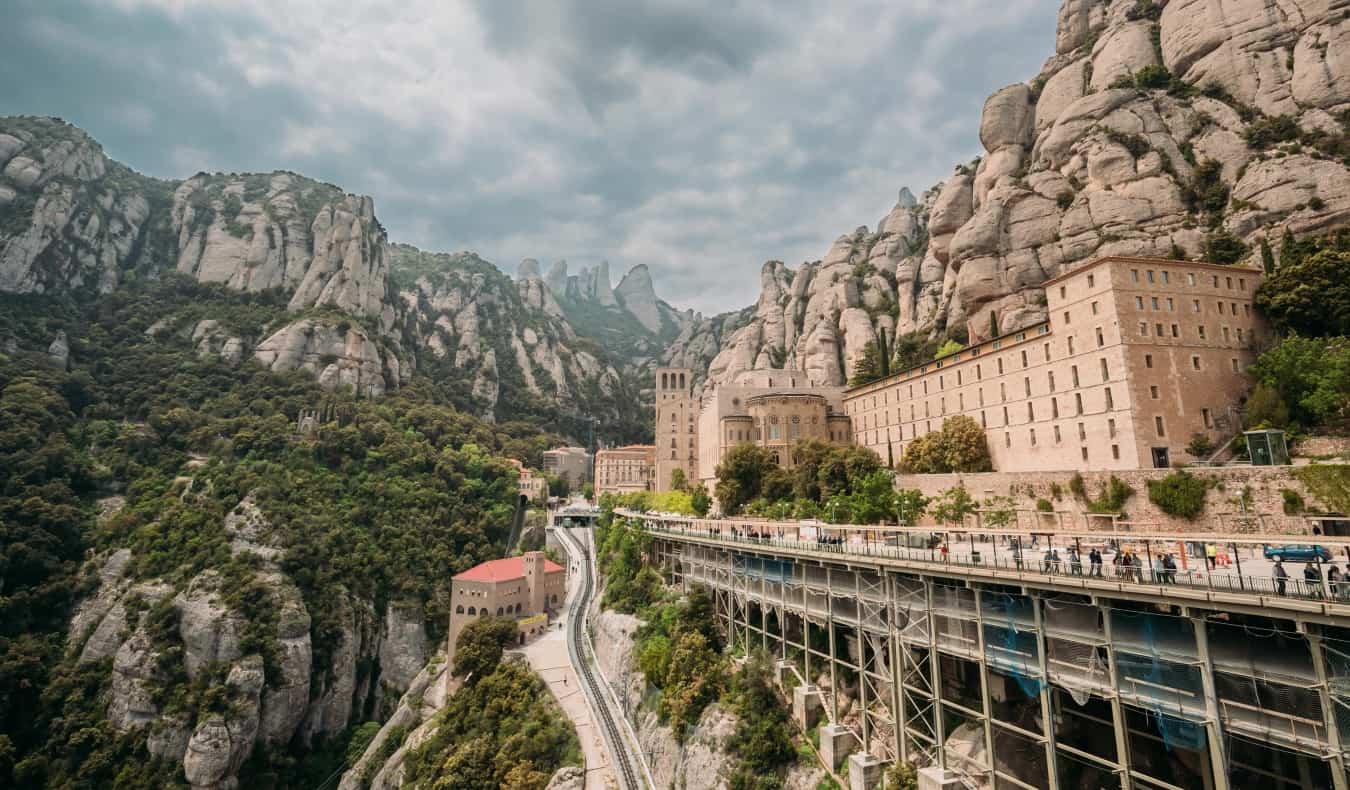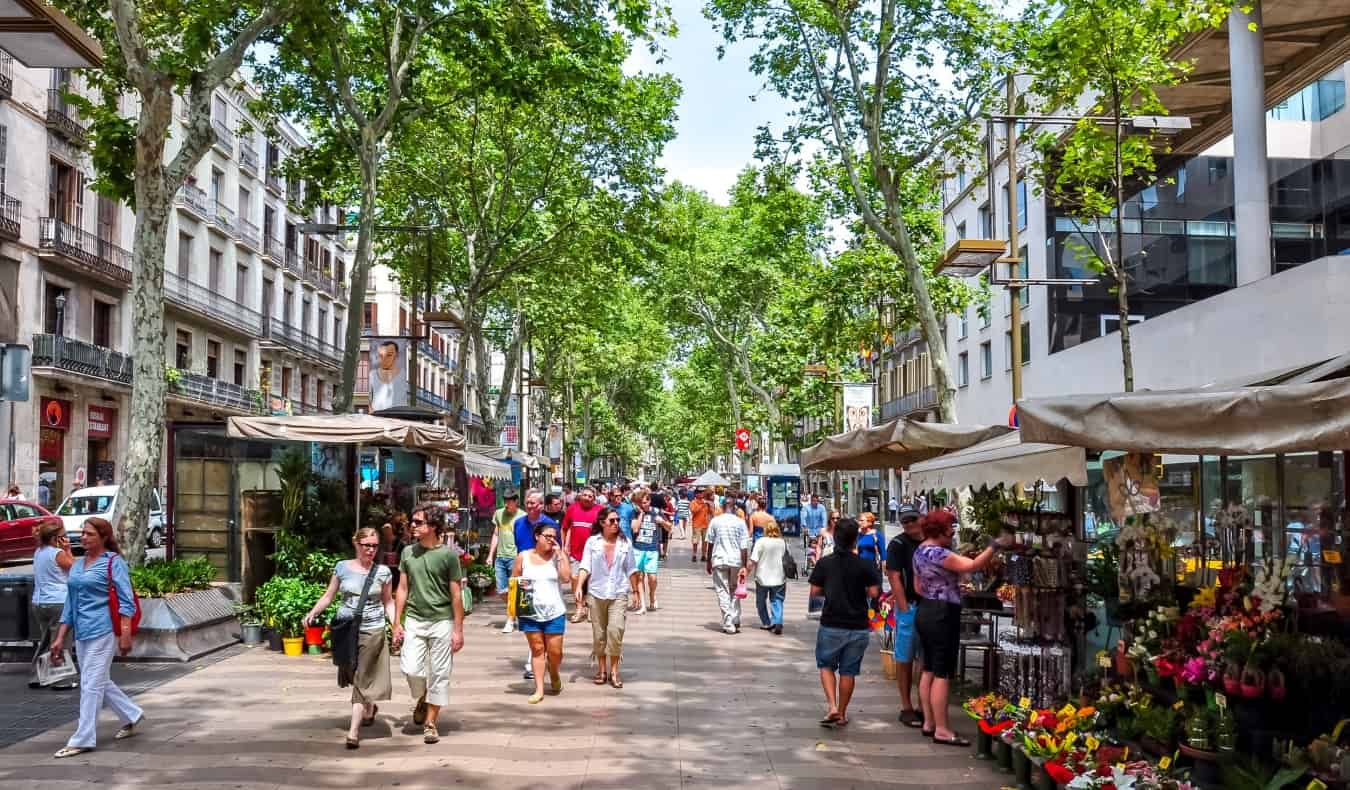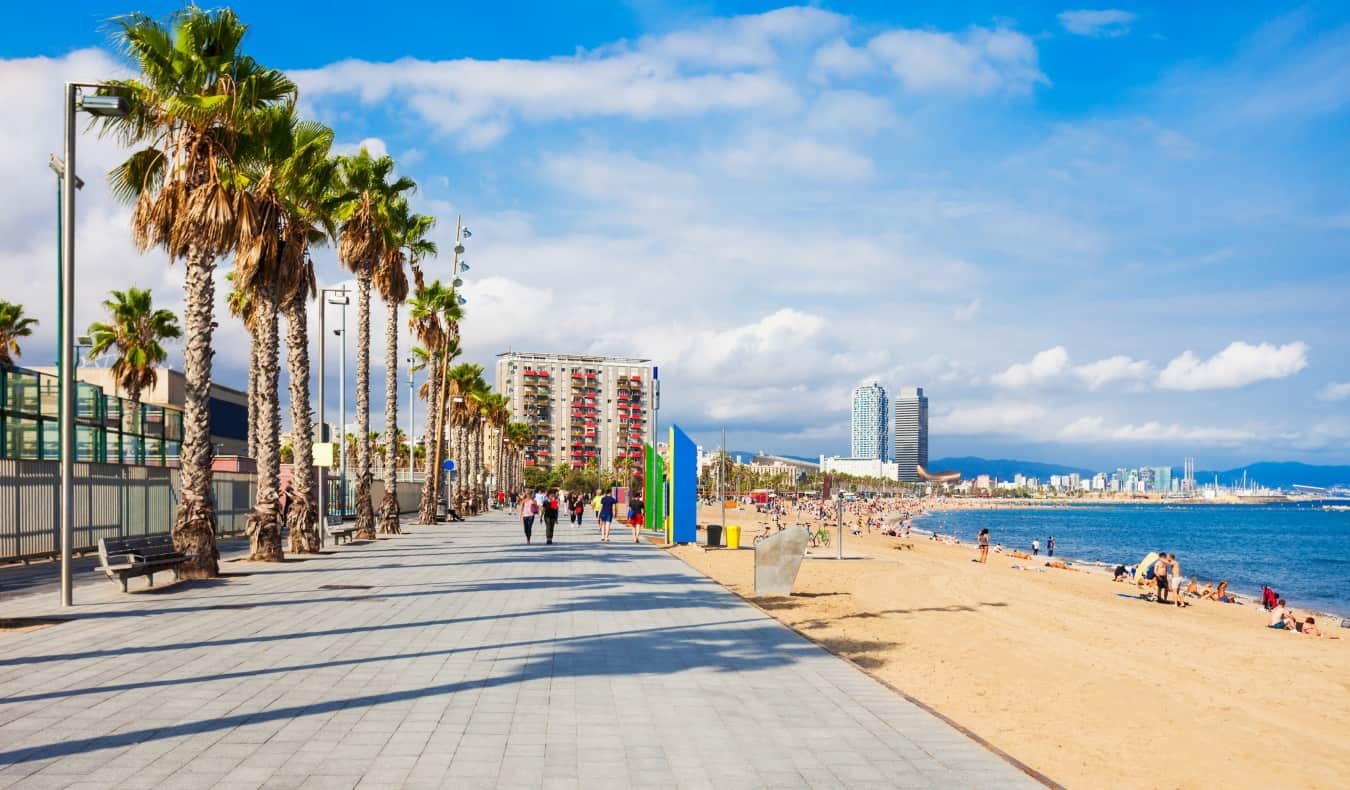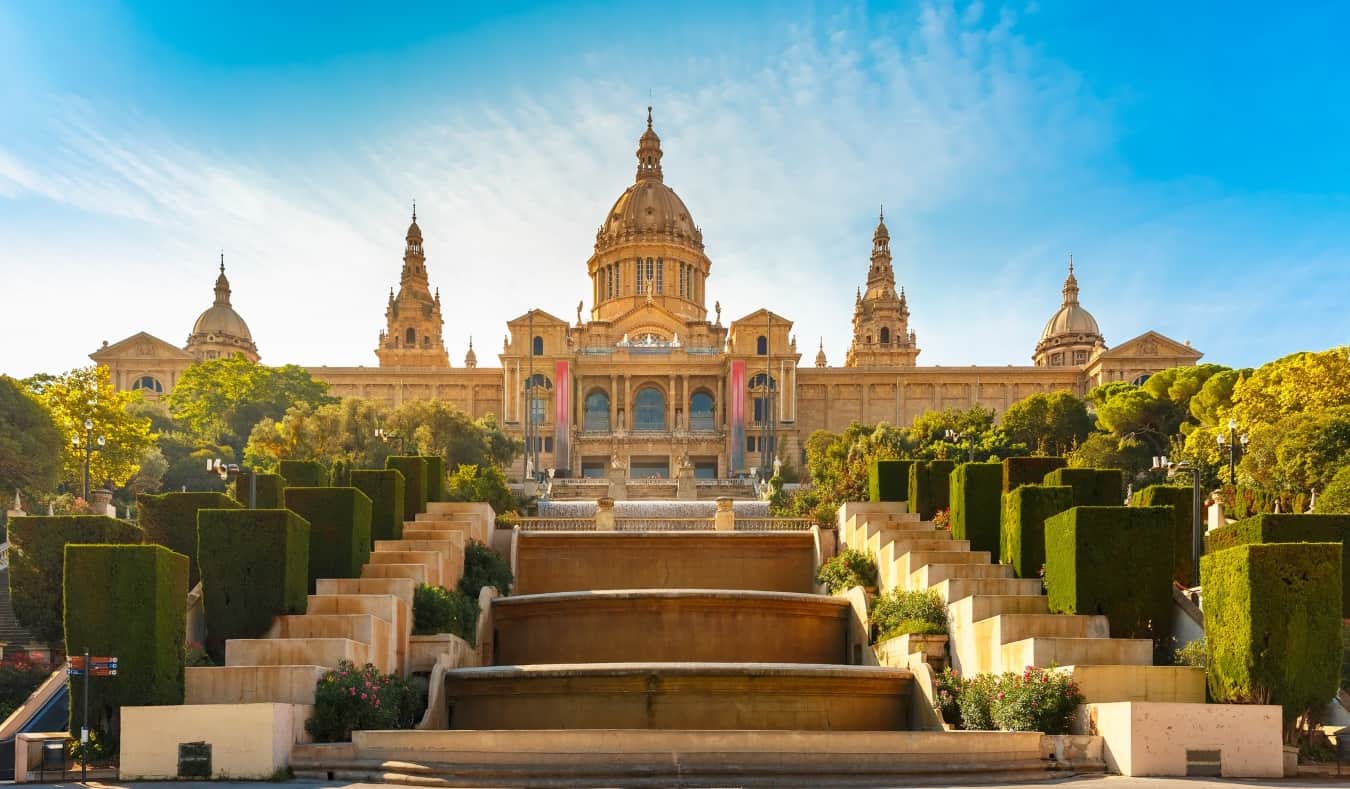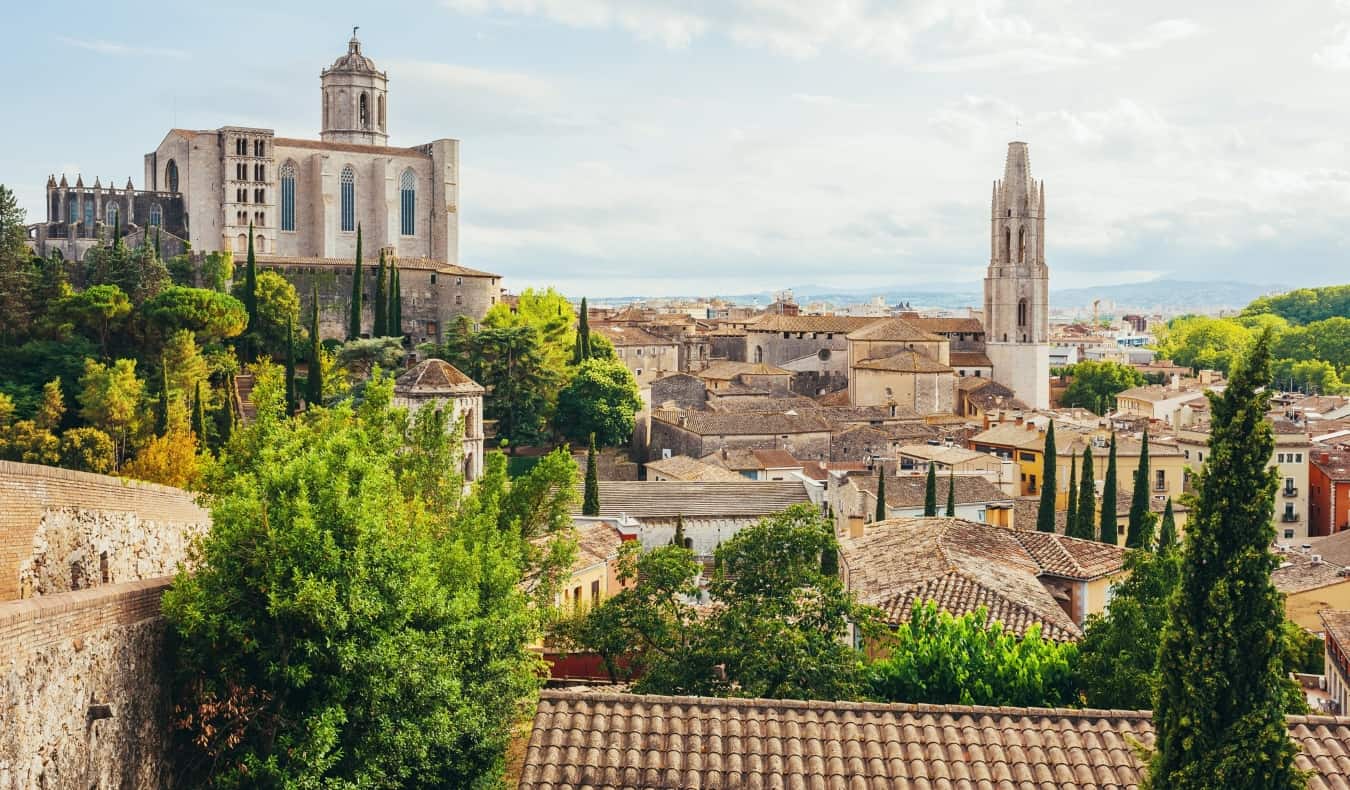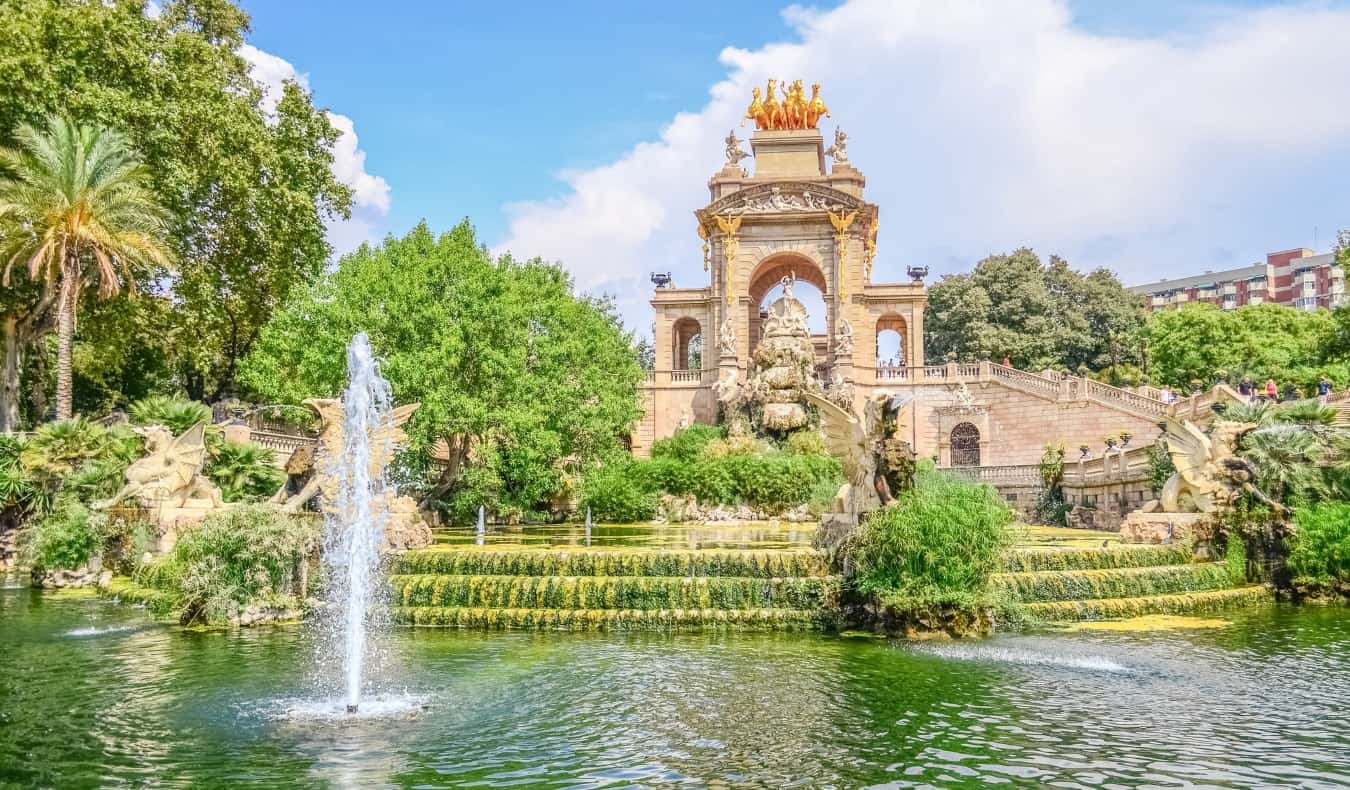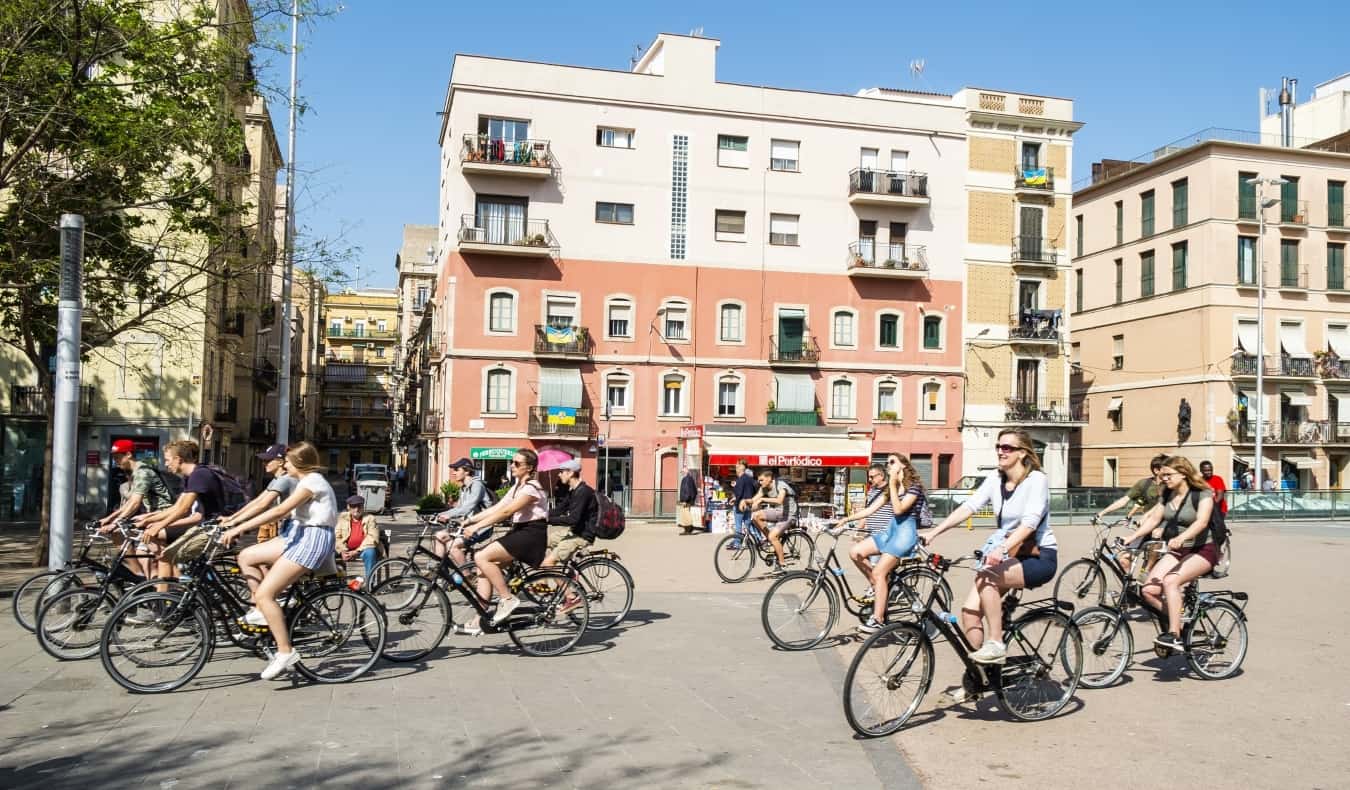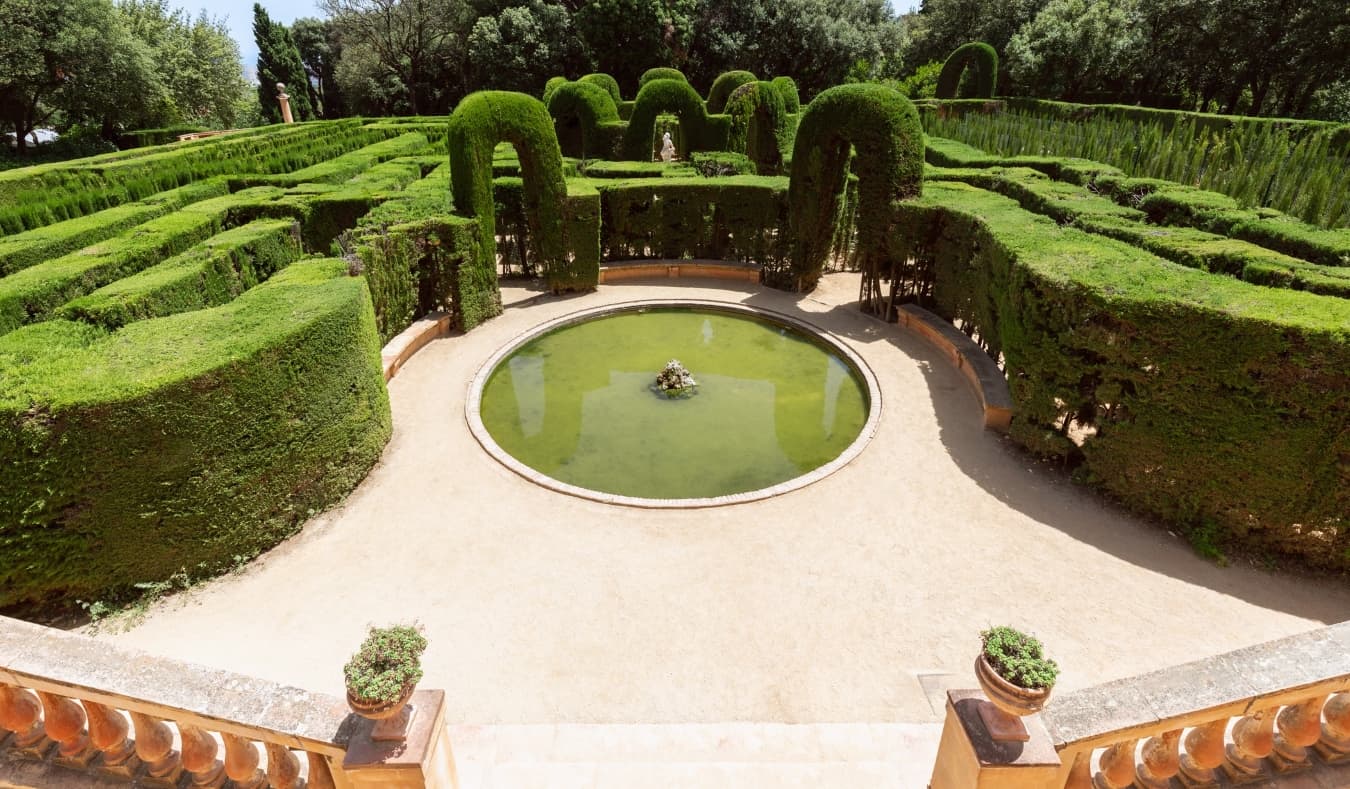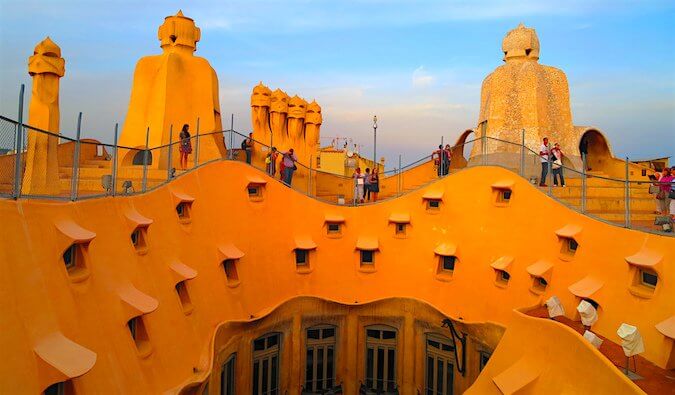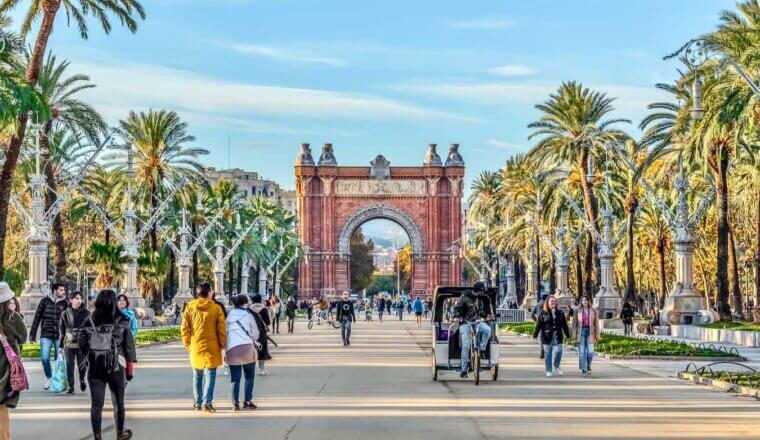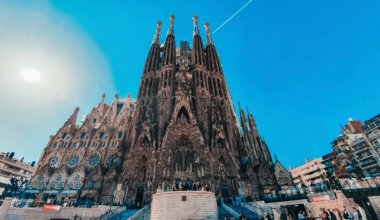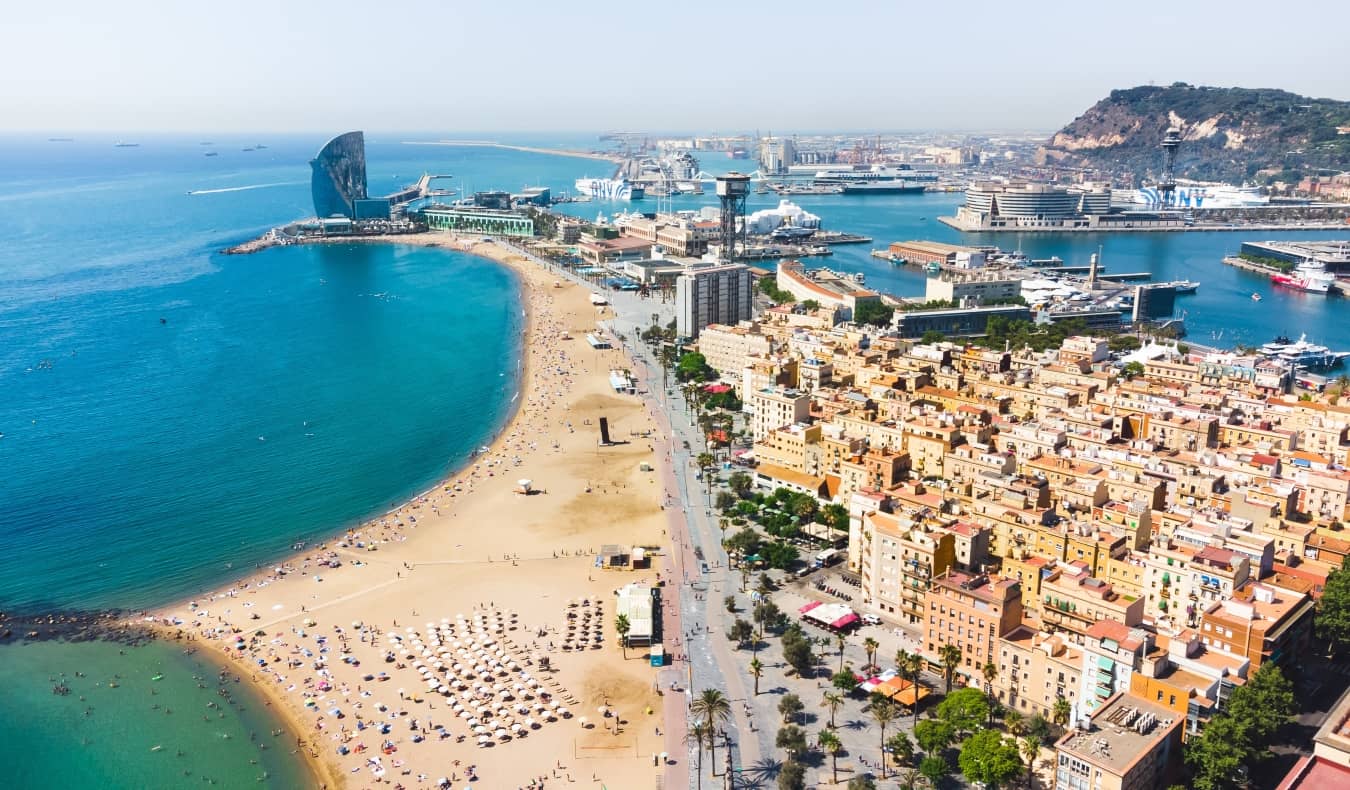
Last updated: 1/12/24 | January 12th, 2024
In recent years, Barcelona has become one of the most popular destinations in Europe. While 5 million people call the city home, over 32 million travelers visit each and every year. (It is actually one of the worst cities in the world for overtourism so visit in the off-season!)
Despite the crowds, I love visiting Barcelona. Every visit makes me fall in love with it over and over again.
The city is the capital of the Catalonia region in Spain, an area that has been fighting for independence for many years. In fact, Barcelonans consider themselves to be Catalonian — not Spanish.
Barcelona was established by the Romans as a colony called Barcino (be sure to visit the ruins underneath the city), but the first human settlements in Barcelona actually date back to Neolithic times. The city became the economic and political center of the Western Mediterranean in the Middle Ages and it still has incredible Gothic structures all over the place. The more recent architecture includes Gaudí’s work from the 19th and 20th centuries – it dots every district and adds a flamboyant charm to the city.
Barcelona is also a foodie’s dream destination. Fro traditional dishes like tortilla, paella, jamón ibérico and patatas bravas, to Catalonian specialties such as pamtomaquet (Catalonian bread with tomato), esqueixada (salt cod) and bombas (fried potato balls), Barcelona is haven for foodies like me who like to eat our way around a new destination.
With delicious food, incredible history and architecture, perfect weather, and a lively nightlife, Barcelona is a city that can entertain anyone.
To help you make the most of your next visit, here are the best things to see and do in Barcelona. They will give you a feel for the city, allow you to eat all the best food, and get you away from the overbearing crowds!
1. Take a Free Walking Tour
I love free walking tours. I think they are the best way to get to know a new city and I always try to take one anytime I go somewhere new. You get to see the main sights, meet other travelers, and chat with an expert local guide who can share their insider tips and advice. Just be sure to tip your guide at the end! My recommended walking tour companies in Barcelona are:
For paid tour options, check out Get Your Guide. They have tons of tours for every interest and budget!
2. Get Lost in the Barri Gotic
Barcelona’s old Gothic Quarter (Barri Gotic) is my favorite part of town. It’s home to the oldest parts of the city, including the remains of the Roman wall and several medieval buildings. It’s a neighborhood filled with bars, clubs, and restaurants now. While it is a little touristy, to me, it’s also the most beautiful area in the city with narrow, winding streets and historic buildings that make you feel like you’ve stepped back in time. Spend a few hours getting lost in this district. You won’t regret it!
3. Visit the Museum of the History of Barcelona
I’ve visited a lot of city museums over the years, but Barcelona has one of the best there is. Opened in 1943, the museum is home to over 4,000 square meters of Roman ruins (located below the museum) that you can walk through. There is also a free (and quite detailed) audio guide as well as meticulous explanations of the exhibits. Even if you’re not a history buff, you’ll get a lot out of this museum. It gives a much better sense of the city and its past (and the ruins really are amazing!).
Plaça del Rei, +34 932 56 21 00, ajuntament.barcelona.cat/museuhistoria/ca. Open Tuesday-Sunday from 10am-7pm (8pm on Sundays). Check the website for extra details as not all the attractions are open every day. Admission is 7 EUR per person.
4. See the Grand Royal Palace
Built in the 14th century, the Palau Reial Major was the home of Barcelona’s counts. Located near the history museum, it later housed the Kings of Aragon (the rulers who presided over the region) from 1035 until the 15th century (though most of the palace remains date to the 14th century). It is also said that this is where Christopher Columbus returned after his “discovery” voyage to North America. The palace is made up of three distinct buildings which were all built at different times (two of which are considered gothic masterpieces). Inside, the exhibits showcase a detailed history of the city and region.
The Palace shares hours and admission costs with The Museum of the History of Barcelona above.
5. Admire Barcelona Cathedral
Work started on this Gothic cathedral in the 13th century and lasted over 150 years. Officially known as The Cathedral of the Holy Cross and Saint Eulalia, it was consecrated in 1339 and has two massive spires that stand over 53 meters (174ft) tall, colorful stained glass, and incredible wood carvings inside the ornate and spacious main chamber. Work on the cathedral didn’t finish until the 19th century when a local businessman funded the majority of the remaining costs for the current façade, which follow original sketches from the 13th century.
If you do want to go inside (and you should), be sure to visit the upper terraces as you’ll get an incredible view of the city.
Placita de la Seu 3, +34 933 428 262, catedralbcn.org. Open Monday-Saturday from 9:30am-6:30pm (until 5:15pm on Saturdays) and closed on Sundays and some holidays. For those looking to worship, the cathedral is open daily from 8:30am-12:30pm and 5:45pm-7:30pm on weekdays (times vary slightly at weekends). Admission is 14 EUR for tourists and free for worshipers. Skip-the-line tickets are 18 EUR.
6. Wander Park Güell
Park Güell is a beautiful and sprawling 45-acre garden complex designed by world-famous architect Antoni Gaudí. Dating to the early 1900s, it’s one of the many Gaudí works in the city open to the public. Today, it’s a World Heritage Site and municipal garden that’s free to enter (you can access most of the park for free, though the interior sections charge admission).
The focal point of the park is the main terrace, which is surrounded by a long bench in the form of a sea serpent. The park is right near the famous La Sagrada Familia so it’s easy to visit both back to back. It’s a beautiful and colorful park but it also gets busy so try to go early or on a weekday when the crowds are thinner.
Carrer d’Olot, parkguell.barcelona/en. Open daily from 9:30am-6:00pm from April-October (closing times vary in winter and spring). Admission for the interior section is 13 EUR per person. Guided tours are available for 22 EUR. If you buy tickets, make sure you book them in advance as they sell out quickly.
7. See La Sagrada Família
La Sagrada Família is arguably the most famous of Gaudí’s works — even though it’s still not finished (construction began in 1882 and is scheduled to be completed in 2030). Gaudí was a devout Catholic and the church was his final project, one he spent the last 10 years of his life working on.
Like all of Gaudí’s work, the church (which was consecrated as a minor basilica in 2010) blends various themes and influences and is a mix of both Gothic and Art Nouveau styles.
While you can take in the church from the outside, I’d encourage you to explore the interior with an audio guide. It covers the entire history of the church and will give you an insightful overview of this unique (and massive) project.
If you can, try to visit between mid-morning and late afternoon so you can see the sunlight cascade throughout all the stained glass.
Plaça de la Sagrada Familia, +34 932 080 414, sagradafamilia.org. Open April through September, Monday-Saturday 9am-8pm, and on Sundays, 10:30am-8pm (the rest of the year closing times are an hour or two earlier). Skip-the-line tickets (with an audio guide) are 33.80 EUR. Book in advance as they disappear quickly.
8. Explore La Boquería
The Mercat de Sant Josep de la Boquería (La Boquería for short) is a public market near La Rambla. The market has been at this location for hundreds of years and is home to a delectable array of food stalls and restaurants.
Since it’s right off La Rambla it gets incredibly busy so try to get there early. There’s a wide variety of seafood, including fish, shrimp, octopus, and oysters, as well as nuts, candy, wine, and tapas. It’s a cheap place to grab a snack as you explore the city.
Rambla, 91, +34 934 132 303, boqueria.barcelona/home. Open Monday to Saturday from 8am-8:30pm.
9. Visit Casa Batlló and Casa Milà
Casa Batlló is one of Gaudí’s more eye-catching creations. Located in the Eixample district of Barcelona, he spent two years on this colorful project. Like much of his work, the design is heavily influenced by the Art Nouveau style. The façade was decorated with a mosaic made of broken ceramic tiles that he collected from the trash of a nearby glass shop, which makes the building almost glow in the sunlight. The roof is arched and tiled and has been likened to the back of a dragon. It’s one of my favorite Gaudí buildings.
Just a couple hundred meters away from Casa Batlló is Casa Milà. Known as La Pedrera (“the Stone Quarry”), this building has a facade of limestone (hence the nickname). Built from 1906-1910, Gaudí’s goal was to evoke the sense of a snowy mountain. He also planned for Casa Milà to be a spiritual symbol (he was a devout Catholic) and included lots of religious elements in the design, such as an excerpt from the rosary prayer along the cornice. He also included statues of Mary, St. Michael, and St. Gabriel.
Casa Batlló: Passeig de Gràcia 43, +34 93 216 0306, casabatllo.es. Open weekdays from 9am-8:30pm and weekends from 9am-10pm. Tickets are 35 EUR.
Casa Milà: Passeig de Gràcia 92, +34 93 214 2576, lapedrera.com. Open daily 9am-6:30pm and 7pm-10pm for night tours in winter and 9am-8:30pm and 9pm-11pm in summer. Skip-the-line tickets with an audio guide are 25 EUR.
10. Visit the Picasso Museum
This is the most comprehensive collection of Pablo Picasso’s works in the world. Opened in 1963, the museum is home to over 4,000 works by Picasso. While I’m personally not a huge fan of Picasso’s later work, it’s still interesting to learn about his life and work as he was one of the most influential artists of the 20th century. While his style is unique and not for everyone, the museum is nevertheless worth a visit. It’s amazing to see how his art changed and evolved over the course of his life.
Carrer Montcada 15-23, +34 93 256 30 00, museupicasso.bcn.cat/en. Open Tuesday-Sunday from 10am-7pm. Admission is 14 EUR per person, with free entry on Thursdays from 5pm-7pm and on the first Sunday of the month. A guided Picasso-themed walking tour that includes entrance to the museum at the end is 42 EUR.
11. Barcelona Museum of Contemporary Art (MACBA)
This museum has over 5,000 works dating from the mid-20th century onwards. The collection includes an extensive collection of pieces by Spanish artists such as Joan Miró and Pablo Picasso. There are also works by Americans Andy Warhol and Alexander Calder. Personally, I’m not a huge fan of modern art but if you are, be sure to add this to your itinerary!
Plaça dels Àngels 1, +34 934 12 08 10, macba.cat/en. Open weekdays from 11am-7:30pm, Saturdays from 10am-8pm, and Sundays/Public Holidays from 10am-3pm (closed on Tuesdays except public holidays). Admission is 10.80 EUR online or 12 EUR at the door and includes unlimited return visits within a month of purchase. Entry is free on Saturdays starting at 4pm.
12. Take a Day Trip to Montserrat
To escape the city for a day, head to Montserrat. It’s an hour away by train and the city is next to a mountain range. It makes for a fun escape from Barcelona’s busy urban atmosphere. There are lots of hiking trails here, but if you don’t want to hike you can also take a cable car up to the peak to take in the view.
Be sure to visit the Santa Maria de Montserrat monastery to see the famous shrine of the Black Madonna. The monastery is built into the mountain and the Black Madonna statue is said to have been carved in Jerusalem during the early years of Christianity, though it most likely dates to the 12th century.
If you’re an art fan, visit the Art Museum Of Montserrat. It has works by Monet, Dali, Picasso, and many other famous artists. Lastly, be sure to visit the local market (it’s on the way to the monastery). It’s the perfect place to buy local products like fresh produce, cheese, honey, and artisan crafts. And if you’re an adrenaline junkie, there is tons of rock climbing to be done here as well (either solo or with a hired guide).
Tickets for the hour-long journey (via train and cable car) cost around 25 EUR (round trip). You can get them in advance here. Visiting the monastery is free, and tickets to the museum cost 8 EUR.
13. Take a Stroll on La Rambla
This is the most popular (and most crowded) street in the city. It’s lined with trees and beautiful buildings and you’ll usually be able to find lots of locals busking here too. The street grew to prominence during the Middle Ages, and while it’s still the main tourist hub in the city, I’d avoid shopping or eating here (everything is overpriced). That said, it’s nevertheless worth a stroll. The street is just over 1km long so it won’t take long to take in the sights, which include the Gran Teatre del Liceu (the opera house) and a mosaic by Joan Miró.
14. Hit the Beach
If you’re looking to relax and enjoy Barcelona’s beautiful weather, head to the beach. The city has a popular beach that’s open year-round called Barceloneta. It’s long, wide, and the water is great for swimming. It was made from imported Egyptian sand for the 1992 Olympics. There are also a lot of good restaurants on the boardwalk. The beach is always busy with both tourists and locals so walk further from the center to reach some quieter and cleaner sections. Two areas I’d recommend are Sant Sebastià (in the south) and Somorrostro (in the north).
15. Watch Some Flamenco
Flamenco is a traditional style of Spanish music and dance. It originated in Andalusia but there are plenty of places to see it in Barcelona. It’s a lively, expressive style known for its intricate footwork and hand movements. If you’re looking to take in a show, Barcelona has a few affordable venues where you can watch a performance:
- Los Tarantos – This is the oldest flamenco venue in the city. Performances are just 40 minutes so it’s a good place for an introduction. Plaça Reial, 17, +34 933 041 210, tarantosbarcelona.com/en. Shows run at 6:30pm, 7:30pm and 8:30pm. Tickets start at 25 EUR.
- Palau Dalmases – One of the best things about the flamenco shows here is the venue. This palace has amazing décor and incredible architecture. Carrer de Montcada, 20, +34 660 76 98 65, flamencopalaudalmases.com. Shows run at 5pm, 6:45pm, 8:30 and 10pm. Tickets start at 25 EUR.
- Tablao Flamenco Cordobes – This show is in a convenient location on Barcelona’s main walkway, but it’s expensive. La Rambla, 35, +34 933 17 57 11, tablaocordobes.es. Shows run twice each evening (check the website for times). Admission is 46 EUR (drink and show) or 82 EUR (dinner and show).
16. Ride the Port Cable Car
The 1,450-meter-long harbor aerial tramway with red cars connects Barceloneta and Montjuïc (a prominent hill). The 10-minute ride offers picturesque views of the entire city. You’ll see the port and sea on one side and the city on the other. Also, at the top of the 78-meter Sant Sebastià (San Sebastián) tower in Barceloneta, there’s a restaurant accessible by an elevator. If you want to hike instead, there are a few different trails to the summit, most taking around 3 hours.
Miramar station (Paseo Juan de Borbón) and San Sebastián Tower (Avda. de Miramar), +34 93 430 47 16, telefericodebarcelona.com/en. Open daily from 11am-5:30pm (10:30am-8pm in the summer). Round-trip tickets cost 20 EUR.
17. Explore Montjuïc Hill
If you take the cable car, bus, or hike to the top of the hill you’ll find there’s a lot to keep you busy beyond the view. First, you can explore the Castell de Montjuïc. It’s a large 18th-century fortress with roots that date back to the 17th century. It has some picturesque gardens and offers amazing views overlooking the city. It’s home to a museum with lots of military displays.
You’ll also find the Museu Nacional d’Art de Catalunya here, a Catalonian art museum. It features mostly Gothic, Renaissance, and Baroque works (tickets are 12 EUR). The fountain out front has a spectacular free show on Fridays and Saturdays.
Additionally, don’t miss the Olympic Ring (the main area of the 1992 Olympic Games) and Poble Espanyol, a replica village built in 1929 to resemble an actual traditional Spanish village. It has over 100 buildings, including an Andalusian quarter, a section of the Camino, a monastery, and more! (Tickets are 13.50 EUR.)
Round-trip cable car tickets are 16 EUR.
Castell de Montjuïc: Carretera de Montjuïc 66, + 34 93 256 44 40 ajuntament.barcelona.cat/castelldemontjuic/en. Open Monday-Sunday from 10am-8pm (closes at 6pm in the winter). Admission is 9 EUR (13 EUR including a guided tour). It’s free on Sundays after 3pm as well as on the first Sunday of the month.
Museu Nacional: Palau Nacional, Parc de Montjuïc, +34 93 622 03 60, museunacional.cat/en. Open Tuesday to Saturday from 10am-6pm (10am-8pm in summer) and Sundays and public holidays from 10am to 3pm. Admission is 12 EUR and free on Saturdays after 3pm and on the first Sunday of the month.
Olympic Ring: Av. de Francesc Ferrer i Guàrdia, 13, +34 93 508 63 00, poble-espanyol.com/en. Open 8am-10:30pm on weekdays and 24 hours on weekends. Admission to the park is free.
18. Take a Food Tour or Cooking Class
Like the rest of Spain, Barcelona is a very foodie-centric city. While you’re here, I highly recommend taking either a cooking class or a food tour (or both!). You’ll learn about traditional Catalan cooking, get to see and sample fresh ingredients, and get to walk through local markets. Some companies to check out are:
19. Visit an Old-School Amusement Park
Built in 1899 and opened in 1901, Tibidabo Barcelona is one of the oldest amusement parks in the world. Located on a mountain in the Serra de Collserola, it offers an incredible view of Barcelona and the coastline in addition to its rides, games, and restaurants. It’s a fun activity to do with kids.
Tibidabo Square, 3-4, +34 932 11 79 42, tibidabo.cat. Hours vary depending on the season. Check the website for details. Admission is 35 EUR.
20. Take a Day Trip to Girona
Girona is a medieval city just 100km from Barcelona. It’s also one of my favorite destinations in the entire country. Here you can climb atop the city walls, wander the narrow lanes of the Jewish Quarter, and soak up the ambiance at one of its many cafés.
Don’t miss the Cathedral of Girona and the Monastery of Saint Daniel and be sure to stroll across the Eiffel Bridge (a small bridge designed by Gustave Eiffel, the man who designed the Eiffel Tower in Paris).
You can also take a Game of Thrones tour here too (scenes from King’s Landing and Braavos were filmed here). If you need a break from hectic Barcelona, this is a great place to visit.
21. Watch a Soccer Match
The first “football” game I ever watched live was in Barcelona (I still have the shirt I bought that day). Barcelona’s two biggest teams are Espanyol and FC Barcelona and, if a match is going on, try to take in one — it’s an amazing and boisterous spectacle (FC Barcelona’s stadium holds around 100,000 people)!
Like most Europeans, Spaniards are obsessed with the sport and tickets are usually not that expensive (they typically cost around 40-50 EUR). If you want to get a glimpse into local life (and make some friends in the process) be sure to catch a game! If you can’t get tickets to a game, both clubs offer tours of their stadium and grounds.
22. Gaze at Barcelona’s Free Public Art
While Spain is an affordable destination, it never hurts to find free activities! There are many to be found around the city, including a huge fountain in the Parc de la Ciutadella. It was designed by Gaudí and built as a tribute to Neptune (the Roman god). Other off-beat (and free) Gaudí works include his lampposts in Plaça Reial and Pla de Palau, and the Miralles gate, and the wall on Passeig de Manuel Girona.
Barcelona native Joan Miró’s work is also found throughout the city. You can see his famous “Woman and Bird” sculpture at Parc de Joan Miró. There are also Miró mosaics on La Rambla and at the city’s airport.
23. Take a Bike Tour
Born Bike Tours Barcelona offers guided tours around the city starting at 32 EUR per person. Tours last 3 hours and are a great way to take in the city if you don’t feel like a regular walking tour. They offer four different tours to choose from, including a tapas tour, a historic tour, and even a beach tour. Their groups are small so it’s easy to meet people too!
24. Visit Parc del Laberint d’Horta
Park of the Labyrinth of Horta was created in 1791 and is composed of various Neoclassical and Romantic gardens as well as a huge hedge maze (which gives the park its name). The maze stretches over 750 meters while the rest of the park covers over 135 acres. The maze was created to re-enact the original Greek myth of the minotaur on Crete and is actually much trickier to complete than you think!
Passeig dels Castanyers 1, +34 931 537 010. Open daily 10am-6pm in winter or 10am-8pm in summer. Admission is 2.23 EUR and free on Wednesdays and Sundays.
25. Catch an Outdoor Film
During July and August, outdoor films are shown on the lawn of the Montjuïc Castle moat. Screenings take place on Mondays, Wednesdays, and Fridays and are preceded by some cool live music. The castle isn’t the only place to catch a movie though, Sant Sebastià beach in Barceloneta has showings on Thursdays and Sundays, Cosmonits at CosmoCaixa shows films outside the Science Museum on Thursdays (July and the first week of August), and the Cine al Aire Libre–l’Illa Diagonal also has movies on at the Gardens of San Juan De Dios on Thursday evenings in July.
Tickets are around 7.50 EUR.
26. See Palau Güell
Palau Guell (Guell Palace) is another of Gaudí’s buildings. It doesn’t jump out at you like other Gaudí structures, however. It was designed for one of Gaudí’s patrons, Eusebi Güell between 1886-88. The main party room, which the home is centered around, has a high ceiling with small holes near the top. This is where lanterns were hung at night from the outside to give the appearance of a starlit sky. There are colorful tree-like chimneys on top. It’s one of my favorites even though it’s a bit creepy and gothic!
Carrer Nou de la Rambla, 3-5, +34 934 725 775, inici.palauguell.cat/. Open daily from 10am-8pm (until 5:30pm in winter). Admission is 12 EUR (free on the first Sunday of every month).
27-31. Get Off the Beaten Path
While there are tons of popular (and crowded) sights in Barcelona, there are also lots of quirky and off-the-beaten-path things to see and do in the city. If you’re looking to explore some of the less-busy and weirder attractions of the city, here are a few worth adding to your itinerary:
- The Erotic Museum – This small museum highlights how sex has been viewed throughout the ages, with works from Medieval Europe and Imperial Japan all the way to the present. There are paintings, drawings, artifacts, sculptures, and more. It’s one of the most unique museums in the city! Open 10am-12am Admission is 13.50 EUR.
- Bunkers of Carmel – These bunkers were built in 1938 during the Spanish Civil War. The bunkers were left to the elements but they now offer incredible views over the city. Try to visit for the sunrise. Open 9am-7pm in summer and 9am-5:30pm in winter. Admission is free.
- Museu de la Xocolata (Chocolate Museum) – Chocolate arrived in Spain 500 years ago, a product of trade and conquests in South America. This museum illuminates the history of chocolate and showcases all sorts of tools, sculptures (made out of chocolate), and artwork. Open Tuesday-Saturday 10am-7pm and Sundays 10am-3pm. Admission is 6 EUR.
- Columns of the Temple of Augustus – Tucked away in the Gothic Quarter are a set of pillars over 2,000 years old. Taken from the remains of an ancient Roman temple, these 30-foot columns have stood here since the 16th century. Admission is free.
Barcelona is consistently ranked as one of Europe’s best (and most-visited) cities. It’s truly an electric city. It’s one of my favorites and this list of things to do will keep you busy for your entire trip. There’s really so much to do in Barcelona. You’ll never be bored!
Get Your In-Depth Budget Guide to Europe!
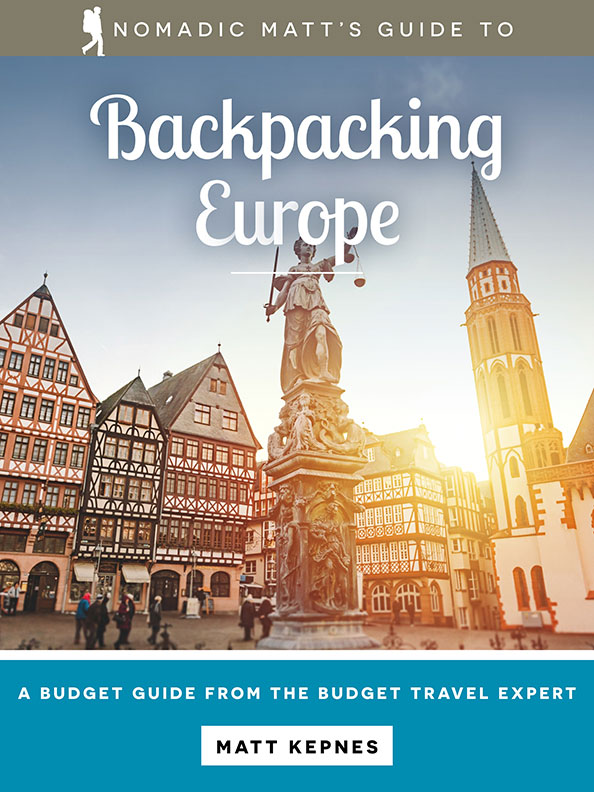
My detailed 200+ page guidebook is made for budget travelers like you! It cuts out the fluff found in other guides and gets straight to the practical information you need to travel while in Europe. It has suggested itineraries, budgets, ways to save money, on and off the beaten path things to see and do, non-touristy restaurants, markets, bars, safety tips, and much more! Click here to learn more and get your copy today.
Book Your Trip to Barcelona: Logistical Tips and Tricks
Book Your Flight
Use Skyscanner to find a cheap flight. They are my favorite search engine because they search websites and airlines around the globe so you always know no stone is left unturned.
Book Your Accommodation
You can book your hostel with Hostelworld as they have the biggest inventory and best deals. If you want to stay somewhere other than a hostel, use Booking.com as they consistently return the cheapest rates for guesthouses and cheap hotels. My favorite places to stay are:
Don’t Forget Travel Insurance
Travel insurance will protect you against illness, injury, theft, and cancellations. It’s comprehensive protection in case anything goes wrong. I never go on a trip without it as I’ve had to use it many times in the past. My favorite companies that offer the best service and value are:
- SafetyWing (best for everyone)
- Insure My Trip (for those over 70)
- Medjet (for additional evacuation coverage)
Looking for the Best Companies to Save Money With?
Check out my resource page for the best companies to use when you travel. I list all the ones I use to save money when I’m on the road. They will save you money when you travel too.
Need a Guide?
Barcelona has some really great guided Gaudí tours. My favorite company to go with is Take Walks. Their “Complete Gaudí Tour” will give you the best in-depth and behind-the-scenes Gaudí tour out there.
Want More Information on Barcelona?
Be sure to visit our robust destination guide on Barcelona for even more planning tips!
